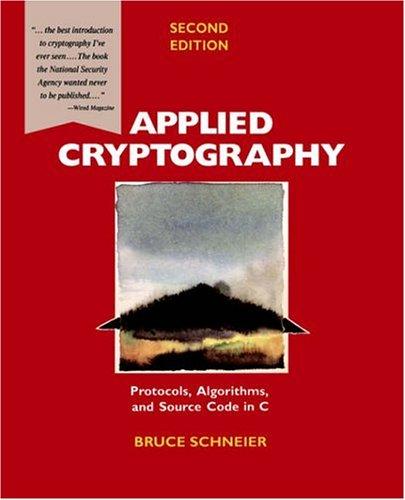In an age where digital communication permeates nearly every aspect of modern life, the relevance of cryptography stands undiminished. With the burgeoning complexities of cybersecurity threats and the ever-evolving nature of digital interactions, the book “Applied Cryptography” by Bruce Schneier continues to be a touchstone in the field. This analysis will explore whether this seminal text retains its value in the year 2025, addressing common observations while hinting at the deeper allure that draws readers back to its pages.
At its core, “Applied Cryptography” offers insights into the principles of cryptographic mechanisms. Initially published in the early 1990s, it has seen multiple editions, each maintaining the comprehensive focus on practical approaches to cryptography. One cannot overlook the historical context within which the book was written. The dawn of the Internet age brought forth unique challenges, and Schneier’s work served as a response to the urgent need for secure communication in an expanding digital landscape.
One common observation about “Applied Cryptography” is its daunting complexity. The book delves deep into mathematical concepts, algorithms, and protocols, demanding considerable technical proficiency from its readers. However, this complexity serves a purpose. It caters to both novices and seasoned professionals alike, offering foundational knowledge that is as vital today as it was at its inception. While some may argue that the landscape of cryptography has shifted considerably over the decades, the fundamental theories articulated by Schneier remain pertinent.
As we delve into the allure of “Applied Cryptography,” it becomes apparent that its enduring relevance lies in its comprehensiveness. The text does not merely present cryptographic techniques; it contextualizes them within real-world applications. The practical examples and case studies illuminate the principles in action, demonstrating the crucial role that cryptography plays in safeguarding personal data, ensuring transactional security, and protecting intellectual properties. Such applications resonate profoundly in 2025, as data breaches and cyber threats grow more sophisticated and pervasive.
A fundamental criticism faced by many technical manuals, including “Applied Cryptography,” is their potential to become obsolete. However, while specific algorithms may evolve, the foundational principles and ethical considerations surrounding cryptography have largely persisted. The ethical dimensions discussed by Schneier, including privacy concerns and the balance between security and freedom, are more critical than ever. In a world fraught with surveillance capitalism and increasing governmental intrusions, the discussions within “Applied Cryptography” resonate deeply with contemporary debates on data ethics. This ability to transcend time yet remain rooted in the realities of the digital age is a significant reason for its ongoing relevance.
Furthermore, the pervasive fascination with cryptography speaks to broader societal themes. During a period characterized by distrust in institutions, a renewed interest in data sovereignty has emerged. Individuals are seeking ways to reclaim their privacy and security amidst an environment of pervasive monitoring. “Applied Cryptography,” with its no-nonsense approach and unwavering focus on practical application, provides a toolkit for those desiring to navigate this landscape confidently. The book acts not only as an educational resource but also as a clarion call for digital literacy in an increasingly cryptographically-dependent society.
Additionally, the narratives surrounding famous breaches and the subsequent reactionary measures adopted by organizations could be seen as a natural progression of the discussions initiated by Schneier. The ongoing evolution of threats and vulnerabilities in the digital ecosystem fosters a cyclical knowledge base, where the insights gleaned from foundational texts inform modern approaches to cryptographic challenges. Consequently, revisiting “Applied Cryptography” in 2025 can provide valuable historical context and analytical frameworks for current security paradigms.
Moreover, with the rise of quantum computing on the horizon, the discourse surrounding the future of cryptography has intensified. Speculation abounds regarding the potential ramifications of quantum algorithms on traditional encryption methods. Given that “Applied Cryptography” provides a robust foundation, it allows readers to approach emerging trends with a well-rounded understanding of underlying principles. As cryptographic methods must evolve to maintain efficacy against quantum-enhanced decryption strategies, the foundational knowledge imparted by Schneier will undoubtedly remain a vital component of ongoing discussions.
In conclusion, while the methodologies and tools of cryptography may undergo transformation, the underlying principles articulated in “Applied Cryptography” remain profoundly relevant. The complexity, ethical considerations, and real-world applicability provide a wealth of knowledge that resonates with the current issues faced by both individuals and organizations. Thus, not only is “Applied Cryptography” still worth reading in 2025, but it is essential for anyone seeking to understand the intricate tapestry of security, privacy, and ethics that defines the modern digital landscape. The book serves as a bridge between historical context and future possibilities, inviting readers to reflect on the continuing evolution of cryptographic practices amid an ever-shifting technological terrain.








Leave a Comment